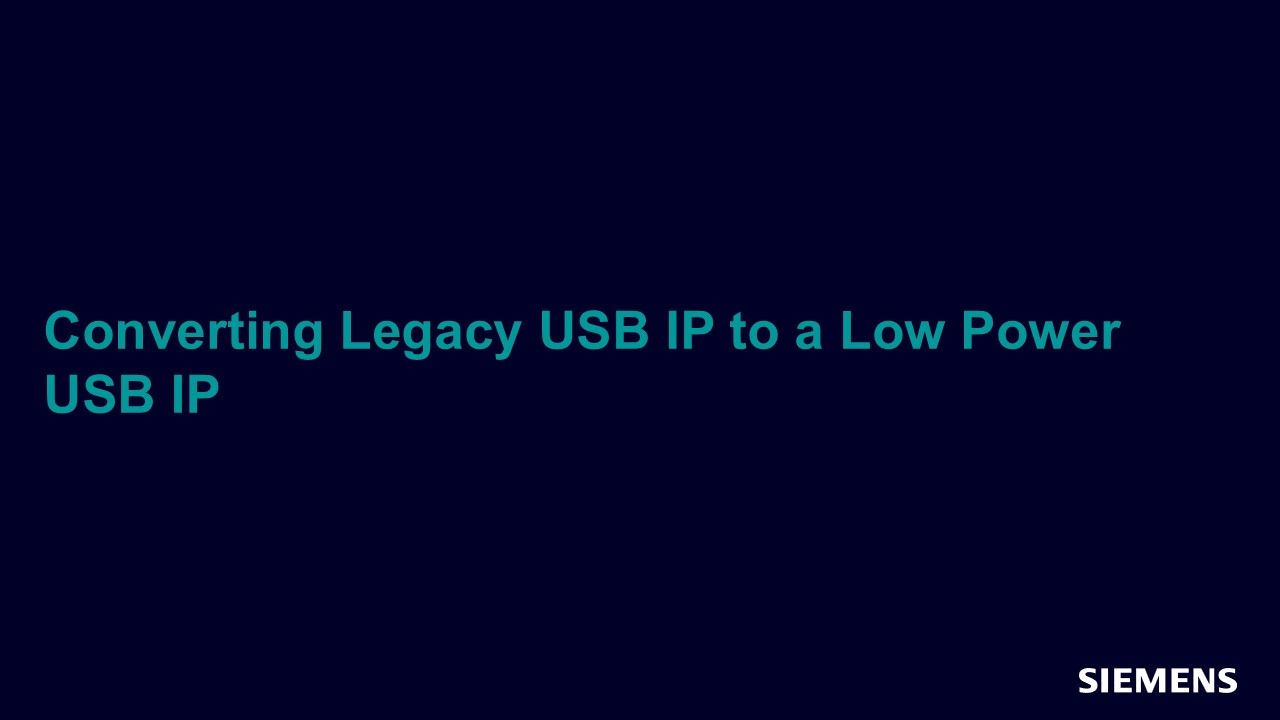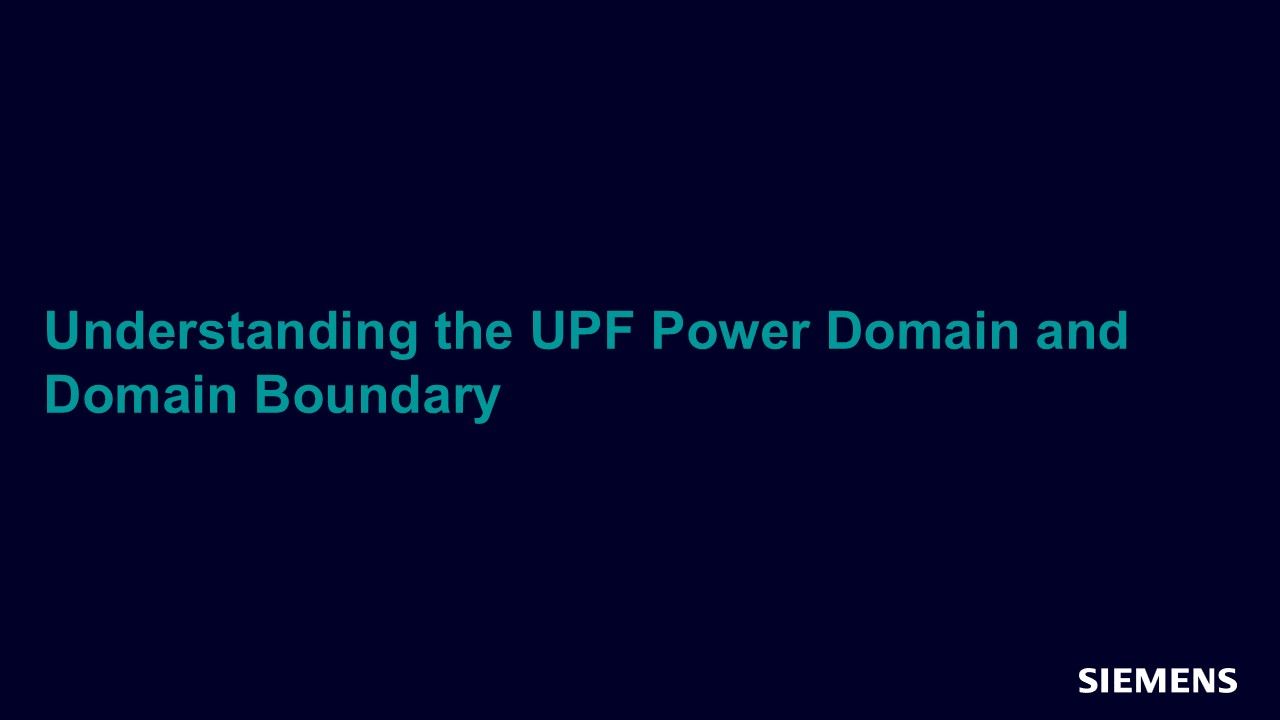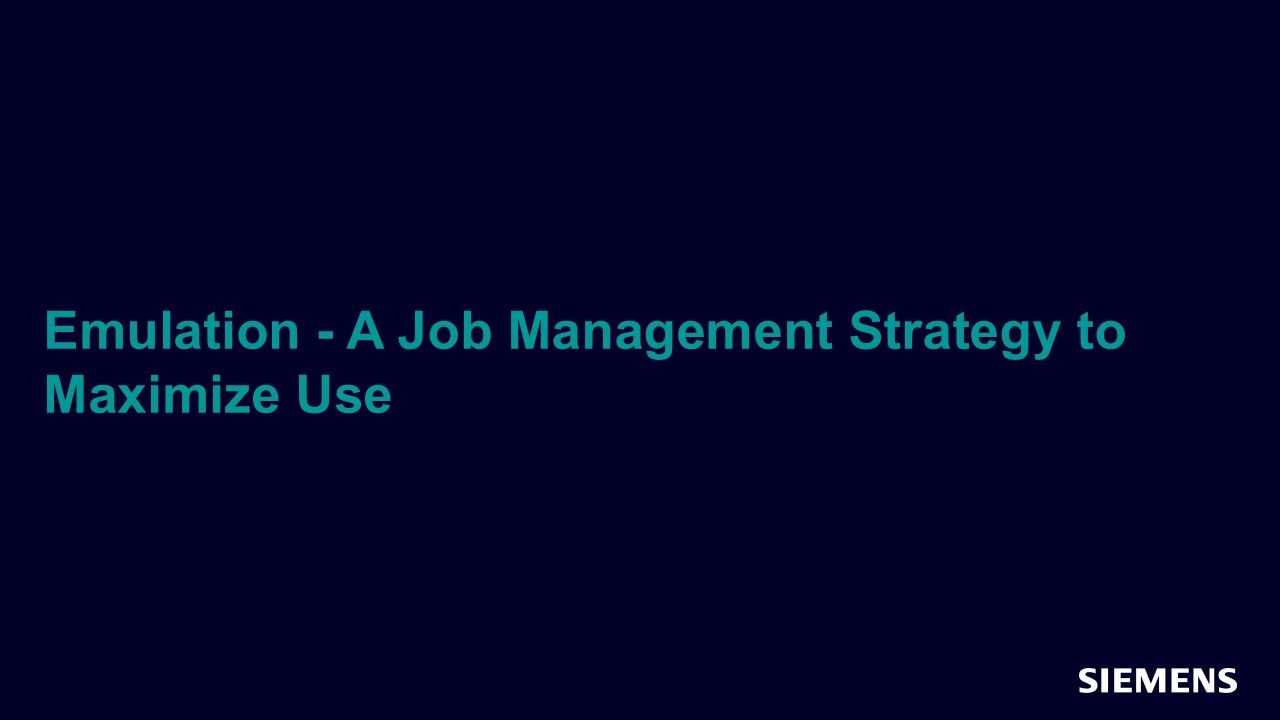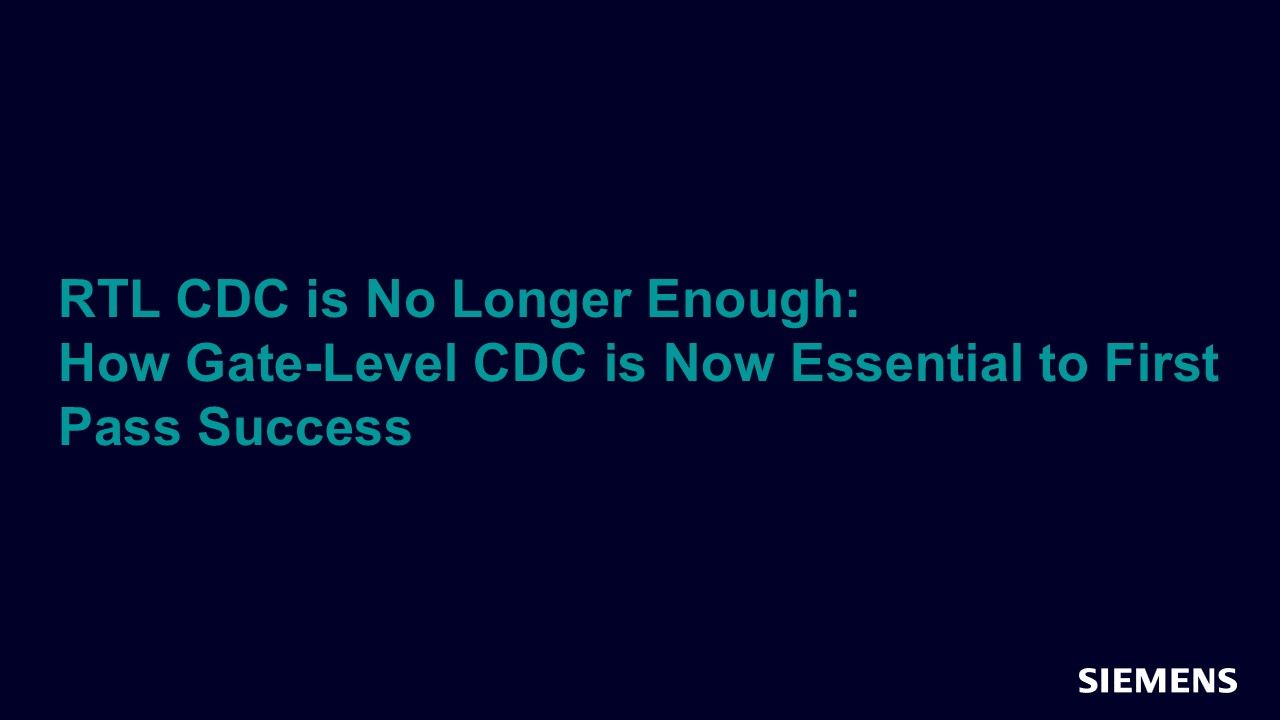Search Results
Filters
Advanced Search
2141 Results
-

MIPI® CSI2 TX IP Verification Using Questa Verification IPs
Article - Jun 28, 2017 by Ivan Ristic
The purpose of this article is to present the verification process of HDL Design House MIPI® CSI2 TX IP core using Questa Verification IPs by Siemens EDA.
-

Converting Legacy USB IP to a Low Power USB IP
Article - Jun 28, 2017 by Anand Paralkar, Pervez Bharucha - Silicon Interfaces
Two common queries that customers pose to a design house is whether an existing or new IP can be made "low power" or if "power aware" verification can be carried out on an IP. The IEEE standard – P1801 captures what one may call the syntax and semantics to express the intent of the power architecture of a design.
-

Understanding the UPF Power Domain and Domain Boundary
Article - Jun 28, 2017 by Progyna Khondkar
The Unified Power Format (UPF) plays a central role in mitigating dynamic and static power in the battle for low-power in advanced process technology. A higher process node is definitely attractive as more functionality integration is possible in a smaller die area at a lower cost.
-

Automation and Reuse in RISC-V Verification Flow
Article - Jun 28, 2017 by Marcela Zachariasova, Lubos Moravec - Codasip, Ltd.
The Open RISC-V Instruction Set Architecture (ISA) managed by the RISC-V foundation 1 and backed by an ever increasing number of the who's who in the semiconductor and systems world, provides an alternative to legacy proprietary ISA's. It delivers a high level of flexibility to allow development of very effective application optimized processors, which are targeted to domains that require high performance, low area or low power.
-

Emulation - A Job Management Strategy to Maximize Use
Article - Jun 28, 2017 by Vijay Chobisa
There are many reasons why hardware-based emulation is a “must have” for an effective verification flow. Increased complexity, protocols, embedded software, power and verification at the system level all drive the need for the kind of performance, capacity, and “shift-left” methodology that only emulation delivers.
-

RTL CDC is No Longer Enough: How Gate-Level CDC is Now Essential to First Pass Success
Article - Jun 28, 2017 by Joe Hupcey
Clock-domain crossing (CDC) verification is a critical step in the design verification cycle. However, CDC verification is not only necessary on RTL; at 28nm nodes and below it is also essential on gate-level designs due to the possibility of the introduction of CDC errors during the synthesis phase that can lead to silicon failure. In this article we review the root cause of these challenges and introduce an automated approach to overcome these difficulties.
-

Formal Verification: Not Just for Control Paths
Article - Jun 28, 2017 by Rusty Stuber - Siemens EDA
Formal property verification is sometimes considered a niche methodology ideal for control path applications. However, with a solid methodology base and upfront planning, the benefits of formal property verification, such as full path confidence and requirements based property definition, can also be leveraged for protocol driven datapaths.
-

Migrating to UVM 1800.2
Chapter - Jun 24, 2017 by Verification Methodology Team
The UVM became the IEEE Standard for Universal Verification Methodology Language Reference Manual - 1800.2 in 2017
-

UVM Debug
Track - Jun 14, 2017 by Tom Kiley
In this track, we examine common UVM debug issues, and provide a systematic set of recommendations to effectively address them.
-
UVM Debug Editor Insight
Resource (Slides (.PDF)) - Jun 14, 2017 by Harry Foster
-

UVM Debug Editor Insight
Session - Jun 14, 2017 by Harry Foster
This editor insight session provides an historical perspective on the origin of the word debugging, followed by a discussion on industry trends that motivated us to create the UVM debug track.
-

UVM Connectivity Debug
Session - Jun 14, 2017 by Tom Kiley
In this session we will discuss how to debug connectivity issues between UVM components using the UVM Schematic viewer.
-
UVM Connectivity Debug
Resource (Slides (.PDF)) - Jun 14, 2017 by Tom Kiley
-

UVM Phase Debug
Session - Jun 14, 2017 by Tom Kiley
In this session we will provide an overview of UVM phases, some of the common issues that users run into, and methods to effectively debug them.
-
UVM Phase Debug
Resource (Slides (.PDF)) - Jun 14, 2017 by Tom Kiley
-
Memory Leak Debug
Resource (Slides (.PDF)) - Jun 14, 2017 by Tom Kiley
-

Memory Leak Debug
Session - Jun 14, 2017 by Tom Kiley
In this session we will describe what a memory leak is in a UVM environment and how to effectively debug the issue.
-
UVM Configuration Database Debug
Resource (Slides (.PDF)) - Jun 14, 2017 by Tom Kiley
-

UVM Configuration Database Debug
Session - Jun 14, 2017 by Tom Kiley
In this session we will provide an overview of the UVM configuration database, discuss some of the common issues with configurations, and methods to debug them.
-

Enterprise Ethernet PHY Verification
Seminar - Jun 13, 2017 by Akshay Sarup
In this session, you will learn about the wide breadth of Ethernet speeds and standards specification supported by Questa Verification IP. You will also learn about the various use models and features available in Questa VIP for verifying an Enterprise Ethernet PHY supporting the latest greatest Ethernet speeds.
-

Need for Speed - PCIe® GEN4 Verification
Seminar - Jun 13, 2017 by Akshay Sarup
In this session, you will be introduced to PCI Express and the latest specification updates in PCI Express Base Specification Revision 4.0.
-

Creating a Thorough Verification Environment in Less Than Two Days
Seminar - Jun 13, 2017 by Jason Polychronopoulos
In this session you will learn how to become more productive by utilizing testbench automation, testbench generation, the UVM Framework and the VIP Configurator.
-

Trends and Requirements in High Speed Interface Verification
Seminar - Jun 13, 2017 by Niraj Mathur
In this session, you will learn about trends and requirements in high speed interface (HSI) verification.
-

MIPI® CSI-2 TX Verification
Seminar - Jun 13, 2017 by Ivan Ristic
This session focuses on the technical details on how the verification of MIPI® CSI-2 Transmitter IP was executed using Questa Verification IPs (CSI-2 and AHB).
-

Leveraging the latest DDR & Flash Memory Models
Seminar - Jun 13, 2017 by Jason Polychronopoulos
In this session, you will learn how to leverage the latest DDR and flash memory models.